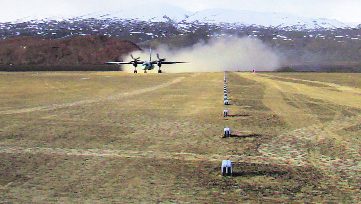
SOURCE: THE PRINT
Casualty evacuation from remote places in the Himalayas not connected even by rail or road is an important part of the lives of those serving in the Indian Air Force. I remember an incident from 2008 that highlights the importance of casualty evacuation.
It was winter and heavy snowfall had almost stopped normal life in the northern region. Heavy shelling by Pakistan had injured many of our soldiers. I received an emergency evacuation message in Chandigarh. We promptly activated the stand-by crew. However, when I studied the weather at Thoise in Ladakh’s Nubra Valley, from where the casualties were to be airlifted, I realised it was marginal and the crew may not be able to execute the mission.
The weather indicated that clouds were covering the entire region of Leh and Thoise. In hilly regions, one has to keep the ground in contact and keep clear of hills. Descend on instruments is a big no. I was the most experienced and the senior-most pilot in the Squadron, so I decided to attempt a landing.
The weather was such that in normal circumstances, one would not have even attempted a landing and instead waited for a clear day. But it was a matter of life and death for about 8 to 10 soldiers. We took off within half an hour from Chandigarh. The weather en-route, until Leh, was negotiable. We decided to go overhead to assess the weather for landing as we approached Thoise. We could not see the ground at all, not even through a few very clear patches.
Staying above hills in Thoise was a safe option, so we circled around and waited for a clearance to descend through the opening in the clouds, because the task of casualty evacuation was of immense importance. Thanks to our luck, we got a small break in the cloud through which we could see the airfield. Adapting all precautionary measures and keeping ground in contact, we descended and landed at Thoise. I kept the engine running.
Spirited soldiers
The patients were brought to the aircraft and boarded without switching off the engine. The aim was not to waste any time on the ground because the weather was not helping our cause. With the aircraft door closing, I quickly taxied out. The doctor briefed me about the soldiers. All young men aged between 19-20 years with splinter injuries in the head and other body parts. I was to exercise caution about correct pressure maintenance in the aircraft for their comfort, even though they were heavily sedated. In head injury cases, these precautions are necessary.
The aircraft was ready for take-off but the weather played spoilsport once again. There was no break in clouding for our climb. I waited on the runway for 10 minutes without any success. Fuel was just about sufficient for the return journey to Chandigarh. I taxied back to the dispersal, where the doctor again came to the cockpit and told me something surprising.
The moment the soldiers had boarded the aircraft, even in their half-conscious state, they were sure that they were being airlifted to Chandigarh. The very thought of being airlifted to a better hospital showed a marked improvement in their overall health as indicated by their stabilised blood pressure. They were unaware that we had taxied back and not taken off yet — for them, the knowledge that they were in safe hands was clear now.
God showed some mercy and we got an opening. We took off for Chandigarh. When we reached there, we found ambulances were ready to ferry the patients to the Command Hospital. Next morning, I could not resist a visit to the hospital to see how the soldiers were doing. I met them all one by one and was happy to see them recovering. I did not disclose that it was my aircraft that had brought them here. For them, it did not matter: the very sound of An-32 had comforted them and their will power did the rest. Such incidents give one immense satisfaction about task accomplishment. It is the biggest award for your routine job and encourages one to move on with newfound enthusiasm.
AVM Suryakant Chafekar was the Commanding Officer of the 48 Squadron and retired from the Indian Air Force in 2017. Views are personal.






